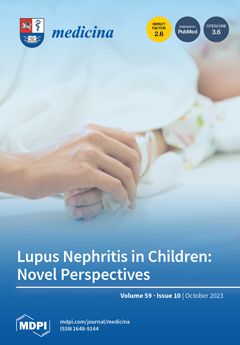Background and Objectives: In response to the COVID-19 pandemic’s effects on education, this study delves into the behavioral, mental health, and sexual education characteristics of high school students during 2020–2021 and 2022–2023.
Materials and Methods: We evaluated a variety of factors,
[...] Read more.
Background and Objectives: In response to the COVID-19 pandemic’s effects on education, this study delves into the behavioral, mental health, and sexual education characteristics of high school students during 2020–2021 and 2022–2023.
Materials and Methods: We evaluated a variety of factors, including substance use, academic performance, sexual activities, mental health support, pandemic-related anxiety levels, and quality of life indicators using standardized instruments such as the SF-36, GAD-7, and WHOQOL-BREF. Furthermore, we addressed specific questions concerning contraception and sexual education during this period.
Results: The questionnaires were filled in by 44 students in 2020–2021 and 41 students in 2022–2023. Significant findings included a noteworthy increase in COVID-19 vaccination rates, from 18.2% in 2020–2021 to 39.0% in 2022–2023 (
p = 0.033), enhanced perceptions of mental health support during remote learning, from 7.1% to 20.0% (
p = 0.044), and a rise in students partaking in reproductive health discussions from 10.7% to 25.0% (
p = 0.046). Additionally, there was a marked decline in anxiety regarding the transition back to in-person learning (
p = 0.048). Health surveys, such as the SF-36, signaled improvements in both physical and mental health over the years (
p = 0.046 and
p = 0.019, respectively), while the GAD-7 scores depicted a considerable reduction in anxiety symptoms (
p = 0.038). The WHOQOL-BREF results also highlighted a significant uptick in students’ mental well-being in 2022–2023 (
p = 0.039).
Conclusions: As the COVID-19 pandemic ended, high school students exhibited shifts in behavior, health, and education over four academic years, particularly in areas of contraceptive knowledge and mental health outcomes. The pronounced enhancements in vaccination rates, perceptions of mental health support, participation in health conversations, and overall mental wellness emphasize the adaptability and resilience of students in these tumultuous periods, and a general increase in contraceptive knowledge and quality of life during the end of the pandemic.
Full article






